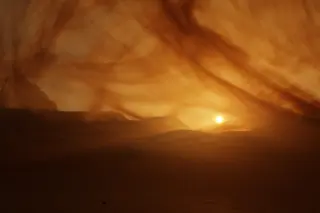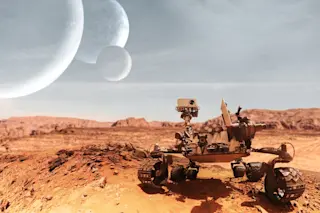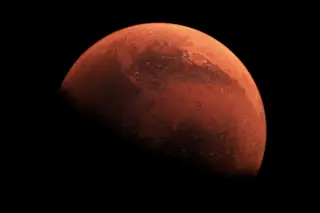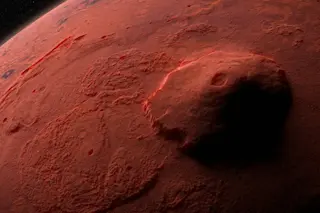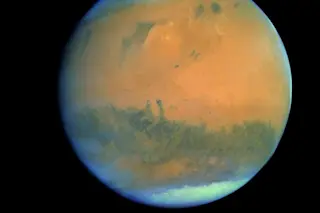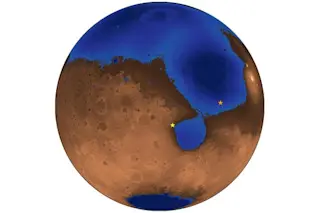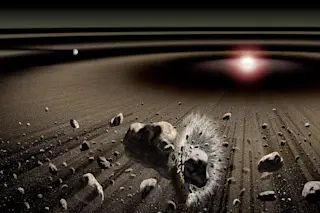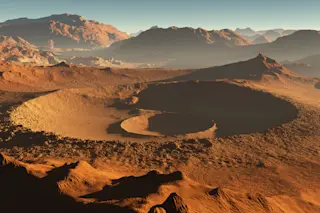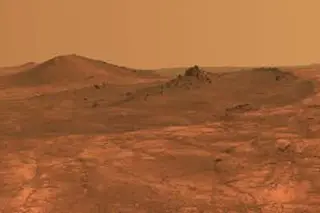This is the sixth in a series of reports from the HI-SEAS simulated Mars mission. Read others in the series here.
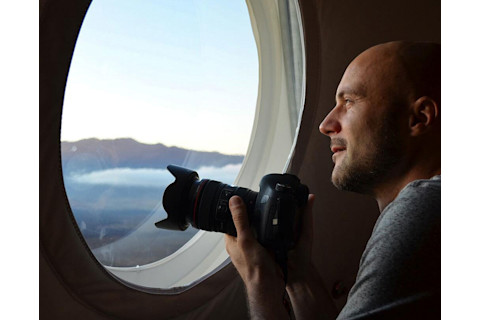
Angelo Vermeulen watches his first sunset in a month through the new window in the HI-SEAS habitat. Photo by Sian Proctor. One month down. On Wednesday we had a party to celebrate. We listened to a retro playlist of The Who, Missy Elliott, Alanis Morissette, and the Monkees. We made spam musubi and chocolate cake. We drank lemonade spiked with dehydrated raspberries, mangos, pineapple and papaya. (Alas, alcohol is not allowed on the mission.) And at sunset, we unveiled a window installed earlier that day, a porthole to lava fields, distant volcanoes and a glorious orange globe. We toasted to the window, to the sun, to our camaraderie and to only three more months left to go. When I signed up for this project, I wasn’t sure what the biggest challenge would be. And in a 120-day simulated Mars mission---essentially an isolation experiment---there are plenty of challenges to choose from. Would it be missing my wife? Missing phone conversations with my parents? Missing happy hour drinks with friends in San Francisco? Would it be the lack of fresh air and sunlight? The monotonous scenery? The infrequent navy showers? Would it be living amicably with five strangers in just 1400 square feet? Or the tedium of filling out multiple daily surveys and reports so the researchers running this project get good data? To be honest, so far, all of these have been bearable. My wife and I email regularly. She’s also a writer, so we’re considering this time as an opportunity to explore our letter-writing and poem-sharing skills. We’re making it work. As for the rest of the potential challenges, I’ve been managing them fairly well.
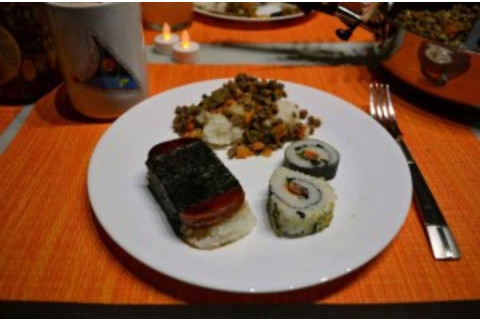
The party meal consisted of sushi, chocolate cake, and dehydrated fruit punch. Photo by Sian Proctor. But I have found one non-obvious aspect of the mission to be surprisingly tricky: keeping up with our daily schedule. On paper, HI-SEAS is a simple food study where the crew is tasked with cooking, eating and cleaning, as well as doing some extra research on the side. In reality, most of our day, from wakeup at 6:30 a.m. to lights out at 10:30 p.m., is overflowing with work. Daily surveys, mealtime questionnaires, the science of the food study, chores, system maintenance, communications, mandatory hour-long exercise, reports, planning space-suited excursions from the dome (known as extravehicular activities or EVAs), conducting EVAs, cooking, eating, cleaning up, etc. When all is said an done, we sometimes have less than an hour a day for our personal research, let alone personal time. Especially in this first month, we’ve been particularly busy setting up procedures and laying the foundation for future work in the mission.
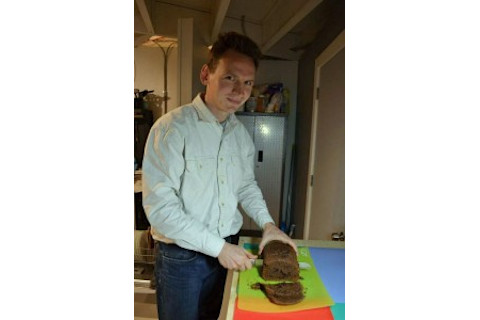
Oleg cuts the chocolate cake for the Fenestration Festival. Photo by Sian Proctor. This schedule of ours, and the resultant sense that we’re trying to catch up, is what makes downtime like our 1st Month Celebration (also known as the Fenestration Festival) so precious. Sure our party was with the same people we see all day every day and in the same dome where we eat, sleep, work and play. But with added music, celebratory food and an after-dinner movie---and removed work obligations until morning---the crew’s mood was buoyed for hours. There’s precedent for frequent, and sometimes nonsensical, celebrations on long journeys or difficult missions. Ernest Shackleton, the 20th century Antarctic explorer, was famous for fostering a celebratory atmosphere on his expeditions, especially when times were tough. He saw humor and festivities as imperatives for keeping his crews happy, healthy and, ultimately, safe. It’s a mindset I’m glad to have aboard HI-SEAS. But I believe this first celebration was the easy one. As the weeks and months wear on, we have to remember to set aside time to relax and have some fun. I'd also like take this opportunity to remind the crew that I have a birthday in June.



